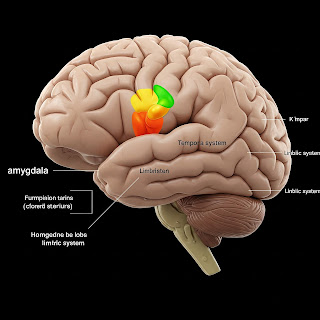The Brain, Higher Consciousness, and Spiritual Awakening
The concept of a higher mind is more than just a scientific discussion—it is a bridge between neuroscience, philosophy, and spirituality. While science doesn’t define a single "higher mind," various brain regions contribute to intuition, wisdom, and heightened states of awareness.
The Brain’s Role in Higher Consciousness
Although spirituality and science often seem separate, certain brain regions are linked to higher thinking, self-awareness, and even mystical experiences:
- Prefrontal Cortex – Responsible for decision-making, planning, and complex thought, often associated with wisdom and foresight.
- Anterior Cingulate Cortex – Plays a role in self-awareness, empathy, and emotional regulation.
- Limbic System – Governs emotions, motivation, and memory, shaping how we experience and process spiritual insights.
The Amygdala: The Seat of Emotion
The amygdala, a small almond-shaped structure deep within the temporal lobe, is vital in processing emotions, particularly fear and pleasure. Since emotions play a role in spiritual experiences—whether it’s awe, transcendence, or deep love—the amygdala may be more involved in spiritual moments than we realize.
The Pineal Gland: The Third Eye?
The pineal gland has long been associated with the "third eye", a mystical symbol of higher awareness in spiritual traditions. While its scientific role is mainly regulating sleep through melatonin production, many believe it is the gateway to intuition, enlightenment, and even psychic abilities.
Spirituality and the Brain: The Science of Awakening
Other brain regions and networks that may contribute to spiritual experiences include:
- The Default Mode Network (DMN) – Active during introspection, self-reflection, and imagination, possibly linked to higher states of consciousness.
- The Temporal Lobes – Involved in sensory processing, memory, and emotions, often associated with mystical or out-of-body experiences.
- The Limbic System – The emotional center of the brain, influencing feelings of transcendence and deep spiritual connection.
The Energy of Thought and Emotion
The idea that thoughts are electrical and feelings are magnetic is a powerful metaphor that aligns with both science and spirituality:
- Thoughts as Electrical Signals – The brain processes information through electrical impulses, shaping how we perceive and interact with the world.
- Emotions as Magnetic Forces – Feelings can attract or repel experiences, reinforcing the idea that our emotional state influences our reality.
Final Thoughts: Bridging Science and Spirituality
While neuroscience continues to explore the brain’s role in spiritual experiences, the idea of a higher mind remains a deeply personal and transformative journey. Whether through meditation, visualization, or self-reflection, understanding the brain’s functions can help us unlock new levels of consciousness, self-awareness, and spiritual growth.


.jpeg)
.jpeg)

.jpg)
Comments
Post a Comment